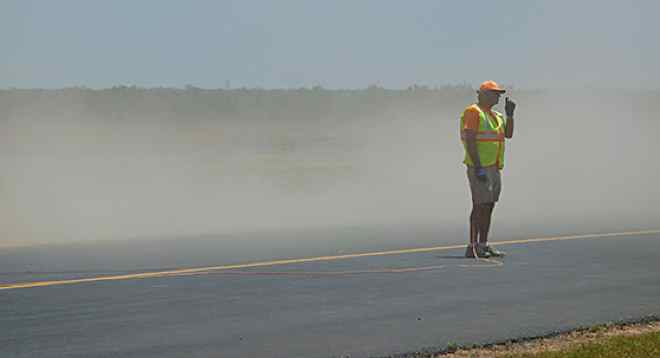© ir. Willem Langelaan OAA. All rights reserved
2022 february 12
© ir. Willem Langelaan OAA. All rights reserved
2022 february 12
HIGH PERFORMANCE SAILPLANES
planeurs de grande finesse

LANGE AVIATION
ANTARES 23
The ANTARES 23 in the World Gliding Championships, Uvalde, TX, 2012
Peter Harvey, member British Gliding Team, © Lange Aviation, 2012
different winglets. We expected performances of the Quintus and Antares to be largely similar. Jonkers had four JS1C. These machines took the 18m JS1, with extended outer tips to 21m span. The increased weight meant they should be able to reach 58kg/m², too. Binder had two EB29, flying at 25m span as per last year.
Dick Butler had just completed his fabulous 30m span Concordia. Pure Hollywood. Dick is a real gentleman and has spent many years following a dream to make his own glider and fly it for his country, in his own county. It worked too, such a beautiful, slim silhouette and fantastic performance.
What a line-up of new machines, with difference performance strategies and spans
It’s been at least 40 years since so many manufacturers produced new gliders at the same moment, the same site, the same championship. That the competition should be in Texas, one of the most consistently fast airmasses in the world and with tasks that would be long, meant that the setting was established to test man and machine to the limit.
A word about Texas
Texas is an unrelenting hard place to fly,
hard in the physical sense. The air is also surprising stable, needing the huge quantities of heat to get thermals moving. And there is plenty of heat. Many days saw 40 degrees, with night time temperatures rarely dropping into the 20s. With an average 5 hours in the air and sometimes much longer, glider performance, ergonomics and ease of use would be crucial.
The Uvalde task area is generally flat, with the coast some 200km south. The terrain is covered in one huge oilfield with thousands of nodding donkeys and new wells being dug. In fact, Texas is undergoing a new oil and gas boom with many thousands of wells planned. Just 30km north, a geologic fault line allowed limestone to gently rise from the plain to form rolling hillsides, eventually lifting some 500m, enough to generally provide a higher airmass, but few landing opportunities in the wild trees and brush. Indeed, this is the fabled ‘wild lands’ of Texas cowboy movies.
Uvalde is small, formed at the cross section of freeways 90 and 83, but with a small river, springing from the fault line just north, flowing through the town centre. These days the high street is full of fast food outlets, but that’s not surprising given that these two freeways are now the longest in the USA, spanning east to west coast, gulf coast to Canada.
There is nothing about this event that is average
Just getting to the event was an epic. Gliders and trailers needed transporting from all over the world. Cars and trucks, metric tow balls (or imperial trailer hooks) truck electric convertors, 110volt mains, crew, accommodation, licences, paperwork. Just getting an airworthy glider to the start line and ready to race was a huge achievement. Indeed, I must take this opportunity to thank Andy Sandhoefner from the Austrian team and Antares 18m pilot whogave up many hours, days even, of his time arranging transport, by air, of our Antares to Texas. Andy, you’re a legend!
Getting any work done outside was murderous in the humidity and heat. Luckily no flies or bugs to worry, just snakes and some very interesting spiders…
A typical flying day
My trusty crew, Baldrick, gets up early (or goes to bed late) and fills the Antares in the dark. He says the air is cooler. Whist he waits for the 380 litres to fill the wings and tail, he cleans the wings from the fine dust, loads the batteries and checks the systems. The focus is usually on pilots, but the reality is we are nothing without our support crew - our team. Baldrick and I have done many competitions together, so I know he was particularly interested in the Antares systems and how easy they are in use - sophisticated design making the complex simple. There’s the electrically operated main wheel, the fuselage air extract system to increase ventilation (but reduce cockpit air leakage), the calibrated total energy system, the twin tail tanks, the electrical switched wing water system. The water system has 6 dump valves per wing. A benefit is the speed of water dumping and ability to optimise handling with span wise loading.
Back to the crew
With Baldrick sweating away as the sun rises (I’m in bed, of course), another 129 gliders are also being prepared. Often the crews work together making an international team of sweat, suntan oil and swearing. Indeed, to the side of us were the two French Open class of